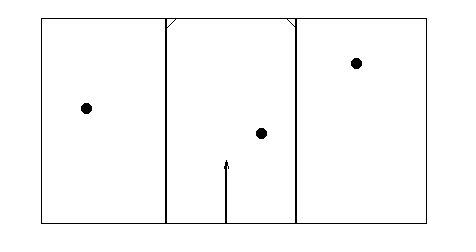

|
| date | 2001-04-11:18:53 |
| Physics |
I've never quite bought the "physics is information theory" metaphor. Partly this is because it is a metaphor, and its proponents don't seem to realize that. Like Dawkins in biology, they seem to want to insist that their way is the real way, the only way. Having long flirted with realism myself, I can understand the attraction, but at the end of the day the appeal of realism fades like faerie gold, into nothing. This is not to say that the information-theoretic approach to physics isn't interesting, just as Dawkins demonstration that viruses are "really" biochemical chain-letters is interesting. But I'm not expecting a grand unified theory of informo-physics to solve any big problems real soon now. One area of physics where information theory has had a lot of play is in analysis of Maxwell's demon and more particularly Szilard's engine. I recently came across a simple modification to Szilard's engine developed by Thomas Hyer at SLAC that appears to break the 2nd Law. Szilard's engine--an ultra-simplified version of Maxwell's demon that Leo Szilard came up with in the late '20's--consisted of a set of a chamber with a single atom in it. If we know which half of the chamber the atom is in at any moment, we can reversibly sweep a partition from the other end of the chamber to the middle. The atom will then bounce around in half the chamber, exerting "pressure" on the partition, which we allow to move and so extract useful work from the thermal energy of the atom. Because the process of sweeping the partition from the end of the chamber is reversible, no entropy is created and so we have a machine that violates the 2nd Law. Oops. It turns out that "knowing which side of the chamber the atom is in" has a cost in terms of entropy which prevents any 2nd Law violation from occurring. Hyer's design, shown in the picture up top, is intended to get around this. In his design there are three chambers, each of which contains one atom. There are also a couple of "doorstops" shown as little triangles that prevent the movable partitions between the chambers from approaching each other too closely. There is a third partition, shown as a vertical arrow in the figure, that can be introduced reversibly into the middle chamber, dividing it in two. Hyer's idea is this: once the third partition is introduced, the atom in the central chamber is either to the left or right of it. The volume containing the atom has been halved, so the "pressure" goes up by a factor of two--the ideal gas law applies exactly to a single particle. The partition on one side or the other therefore moves until the volumes on either side of it are equalized, and we can extract work from this. We then remove the middle partition and let the system relax to its initial configuration again. Hyer contends that we can reversibly insert the middle partition without knowing which side of it the atom is on. This is the contentious bit, and a good example of what makes discussions of Maxwell's demon both interesting and frustrating. Interesting, because you can learn a lot of physics by figuring out why a configuration like this won't work, and frustrating because it can be a long and arduous process to get there. Szilard himself couldn't actually prove his engine wouldn't work, and there is still new work being done suggesting miniscule amounts of work might be extracted from uniform heat baths near absolute zero by various esoteric quantum phenomena. And interesting feature of this kind of work is that it is pretty heavily frowned upon by the physics community. I'm not sure why that should be so, because it is at least as fun and interesting as a lot of the stuff that gets funded, and is certainly engaged in grappling with the problems of physical law at the most fundamental level. |